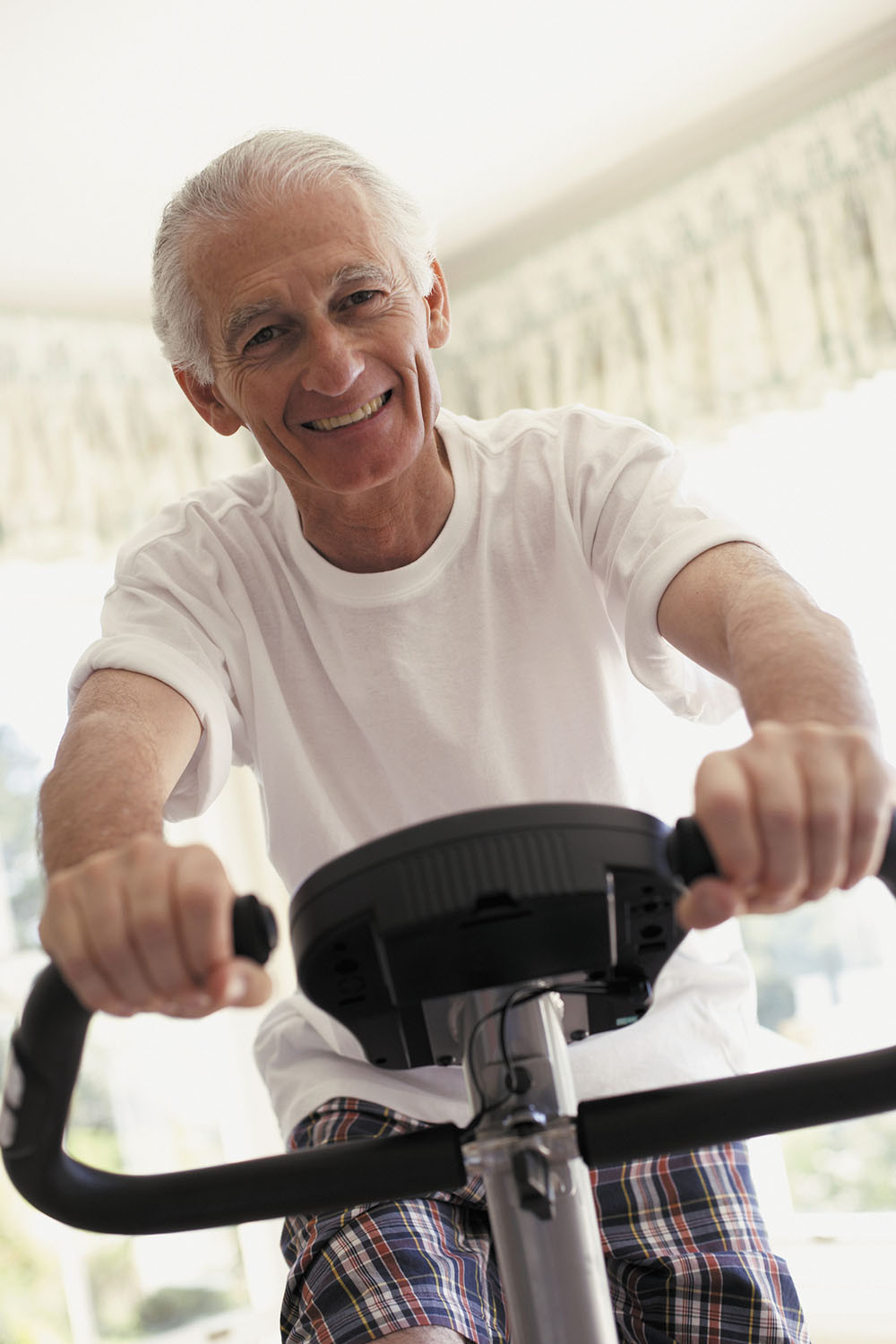Get moving to manage osteoarthritis
Exercise may be the best medicine for healthy joints.
- Reviewed by Howard E. LeWine, MD, Chief Medical Editor, Harvard Health Publishing; Editorial Advisory Board Member, Harvard Health Publishing
 The estimated 32 million Americans with osteoarthritis face a dilemma: exercise is often difficult and painful, but it is precisely what they should do to help manage their pain.
The estimated 32 million Americans with osteoarthritis face a dilemma: exercise is often difficult and painful, but it is precisely what they should do to help manage their pain.
"Regular exercise and movement can help people with osteoarthritis in many ways," says Dr. Jeffrey Katz, professor of medicine and orthopedic surgery at Harvard Medical School. "Besides helping with pain management, it can improve patients' level of function and may delay the need for a joint replacement."
Casing the joints
Osteoarthritis, the most common type of arthritis, is a chronic and progressive disease characterized by loss of the cartilage that covers and protects the ends of the bones where they meet at a joint.
"The condition slowly wears away joint cartilage so that forces usually absorbed by the cartilage are transferred to bone, which has pain sensitive nerve fibers," says Dr. Katz. "Cartilage breakdown can also lead to pain, swelling, inflammation and activity limitation."
Osteoarthritis most often occurs in the knees, hips, and lower back. The condition becomes more common with age, but other factors can increase a person's risk, such as a family history of the disease, previous injury, and excess weight.
There is no cure for osteoarthritis. Nonsteroidal anti-inflammatory drugs, such as ibuprofen (Advil, Motrin), naproxen (Aleve), or aspirin, can temporarily soothe pain and inflammation. Steroid injections also may offer short-term relief.
Another way to manage symptoms is to get moving. "Exercise can't help replace lost cartilage or necessarily slow its natural decline," says Dr. Katz. "It has a supporting role — strengthening the bones and surrounding muscles to protect the affected joints from excess stress so they can work better."
Get evaluated
If you have osteoarthritis, and are having difficulty initiating an exercise program, Dr. Katz recommends seeing a physical therapist.
"An expert evaluation can help identify alignment issues, weakness, and limitations in joint motion that can make joint pain worse and make movements more difficult," he says. "Physical therapists can also design an individualized exercise program and teach patients how to perform the exercises accurately and safely. Working with a physical therapist also can help people overcome any fear or hesitation about movement increasing their pain."
Preventing the pain of osteoarthritisNot only can exercise keep osteoarthritis from possibly becoming worse, but it may reduce the risk of developing the condition. One study that looked for a connection between running and osteoarthritis risk in the hip or knee found that only 3.5% of people who ran for exercise eventually got knee or hip osteoarthritis, compared with 10% of inactive people. Another study found that among people who had mild knee osteoarthritis or were at higher-than-average risk for the disease, those who walked an average of almost 7,000 steps per day (more than three miles) did not experience additional cartilage loss over two years. |
Exercising your options
A standard exercise program typically includes aerobic exercises and resistance training to increase strength in the major muscle groups supporting the joints, like the buttocks, thighs, and the muscles in the lower back. You might use weights, exercise bands, body weight, or another means of providing resistance.
"Your program will depend on various factors, including which joints are involved, how severe the pain is, your fitness level, and whether you have other medical conditions," says Dr. Katz.
Low-impact aerobic activities are also part of an overall exercise strategy, as they help strengthen muscles, improve endurance, and increase your joints' range of motion. Examples include power walking, swimming, using an elliptical trainer, cycling, or riding a stationary bike.
"Your physical therapist can recommend the best low-impact activities to complement your exercise program and how long and often to do them," says Dr. Katz.
Image: © Fuse/Getty Images
About the Author

Matthew Solan, Executive Editor, Harvard Men's Health Watch
About the Reviewer

Howard E. LeWine, MD, Chief Medical Editor, Harvard Health Publishing; Editorial Advisory Board Member, Harvard Health Publishing
Disclaimer:
As a service to our readers, Harvard Health Publishing provides access to our library of archived content. Please note the date of last review or update on all articles.
No content on this site, regardless of date, should ever be used as a substitute for direct medical advice from your doctor or other qualified clinician.
















